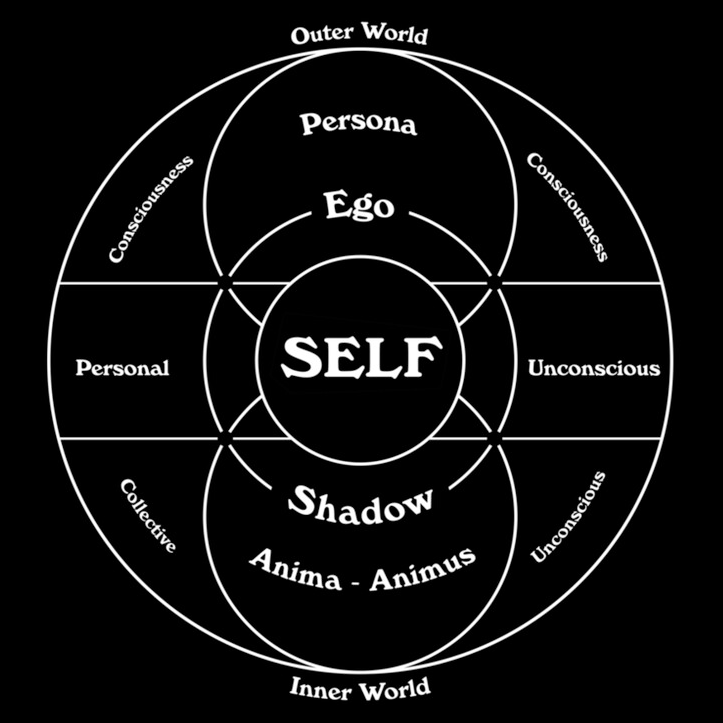Adapted from Robert Johnson’s Inner Work, I wanted to share a somewhat abbreviated form of his practical approach to dream work.
“Dreams show us, in symbolic form, all the different personalities that interact within us and make up our total self… We can see them as independent energy systems that combine in us, for they are autonomous: Each has its own consciousness, its own values, desires, and points of view.” - Robert Johnson, Inner Work
“The unconscious content contrasts strikingly with the conscious material, particularly when the conscious attitude tends too exclusively in a direction that would threaten the vital needs of the individual. The more one-sided his conscious attitude is, and the further it deviates from the optimum, the greater becomes the possibility that vivid dreams with a strongly contrasting but purposive content will appear.” - Carl Jung, CW8
FOUR-STEP OVERVIEW OF DREAM WORK
-
Making associations: We form the foundation for interpreting the dream by finding associations that spring out of our unconscious in response to the dream images.
-
Connecting dream images to inner dynamics: We look for and find the parts of our inner selves that the dream images represent. We find the dynamics at work inside us that are symbolized by the dream situation.
-
Interpreting: We put together the information we have gleaned in the first two steps and arrive at a view of the dream’s meaning when taken as a whole.
-
Doing rituals to make the dream concrete: We learn to do rituals that will make the dream more conscious, imprint its meaning more clearly on our minds, and give it the concreteness of immediate physical experience.
FOUR STEPS IN-DEPTH:
[1] Making associations:
- Go through the dream and write out every image or symbol, which could include persons, objects, situations, colors, sounds, speech, etc.
- Go through each dream image, one at a time, and write out every association that you have with it. Associations could be any word, idea, mental image, feeling, or memory that pops into your head when you look at the dream image.
- Try to use personal associations that honor your special, individual dream symbols. Johnson cautions against using dream-books or dictionaries of symbolisms.
- Be sensitive to colloquialisms from olden times, like “I have the blues” or “full of hot air,” which can be seen as excellent language for the unconscious, when language was “richer in concrete imagery and closer to the archetypes.”
- Using the “it clicks” method: Look for associations that generate a lot of energy in you, such as feeling a spot touched in you where you are wounded and/or confused.
- Using archetypal amplification: Gather information about the archetypes that appear in your dreams from sources such as myths, fairy tales, and ancient religious traditions (e.g. alchemy). After recognizing an archetypal presence in a dream, find the myths or other sources where the same archetype appears, then write down the personal associations that come to you from the mythical sources.
[2] Connecting dream images to inner dynamics:
- Go through each dream image again and ask: “What part of me is that? Where have I seen it functioning in my life lately?”
- Inner dynamics are anything that goes on inside you, any energy system that lives and acts from within you, e.g. emotional events, inner conflicts, an inner personality, a feeling, an attitude, etc.
- Whether a person, place, animal, color, number, or object, dreams present an infinite variety of images, and all of them are used to symbolize, in some way, the flow of your inner life. Most dreams are representations of what goes on inside the dreamer; dreams rarely signify outer or external events.
- If the dream image is a person, ask yourself what traits you have in common with them: What are their main characteristics? How would you describe their character and personality? What set of beliefs, what opinions, does this character function out of? Where do you find those same traits or opinions in you? Do you unconsciously hold that same opinion without realizing it?
- Characteristics that look immoral, barbaric, or embarrassing to us are the “negative” side of a valuable energy, a capacity we could make use of. So long as you are facing your negative and immature characteristics squarely, you also have a duty to acknowledge the fine qualities in yourself, and to live them consciously.
[3] Interpreting:
- The interpretation ties together all the meanings you have drawn from the dream into one, unified picture. It is a coherent statement of what the area means to you as a whole.
- Ask questions like, “What is the central, most important message that this dream is trying to communicate to me? What is it advising me to do? What is the overall meaning of the dream for my life?”
- An adequate dream interpretation should sum up the meaning of your dream in a nutshell. It should also provide a specific application of the dream’s message to your personal life, to what you are doing, to how you are going to live.
- Don’t expect your interpretation to come out in a coherent form on the first try. Sometimes you may find that you can create several interpretations from your associations with the dream, and they all make sense. How do you decide?
- Energy intensity: If the interpretation arouses energy and strong feelings in you, if it suddenly gives you insights into your life, if you suddenly think of other areas of life where this interpretation makes sense, if it offers insights and liberates you from patterns you’ve been stuck in, all of these are signs that there is tremendous energy behind this interpretation.
- Four principles for validating interpretations: 1) Choose an interpretation that shows you something you didn’t know, 2) Avoid the interpretation that inflates your ego or is self-congratulatory, 3) Avoid interpretations that shift responsibility away from you, 4) Learn to live with dreams over time - fit them into the long-term flow of your life (some “big dreams” may require revisits over time).
[4] Doing rituals to make the dream concrete:
- Ask yourself, “What am I going to do about my dream?” This step requires a physical act that will affirm the message of the dream. The ritual is a physical representation of the inner attitude change that the dream called for. It could be a practical act, or a symbolic act.
- The most powerful rituals are the small ones, the subtle ones. It is not necessary to do big things or expensive thing. The best rituals are physical, solitary, and silent. These are the ones that register most deeply with the unconscious.
- We can think of this as taking a seed from a plant that has sprouted and replanting it back into the soil from which it grew. This produces new energy and new life, the cycle of generation continues, and new forms push their way up to the level of consciousness.
- Ritual is symbolic behavior, consciously performed; an act that has symbolic meaning, and transforms into an active, dynamic symbol. Ritual allows for the expression of reverence, gratitude, awe, elation, and sometimes terror.

